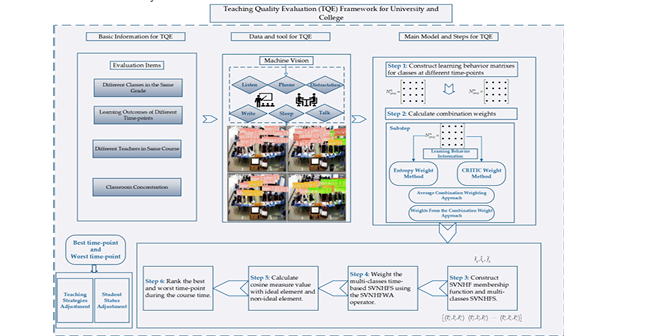An Evaluation Method for University Classroom Education Quality under Machine Vision and Single-Valued Neutrosophic Hesitant Fuzzy Set Environment
Keywords:
Teaching Quality Evaluation, Machine vision, Classroom Behavior Analysis, Single valued neutrosophic hesitant fuzzy set, Hybrid Weighting Method, Multi-attribute decision-making.Abstract
With the advancement of artificial intelligence, machine vision offers a novel approach to
university teaching quality evaluation (TQE). However, existing studies are often hindered by
subjectivity and lack of standardized evaluation methods, which impede accurate assessment of
student learning effectiveness. Therefore, this study addresses these limitations by proposing a TQE
framework that integrates machine vision with single-valued neutrosophic hesitant fuzzy sets
(SVNHFSs). Specifically, the main contributions of this study are as follows. First, this study
innovatively employs machine vision to capture student learning behaviors, constructing a
classroom behavior matrix that serves as the foundation for evaluation. Second, this study
introduces a combined weighting method, leveraging both the entropy weight method and the
Criteria Importance Through Inter-Criteria Correlation (CRITIC) weight method, to assign weights
to different time-points during the classes. Third, the SVNHFS is utilized to construct a classroom
behavior evaluation matrix, and the single-valued neutrosophic hesitant fuzzy weighted average
(SVNHFWA) operator is applied for weighting. In addition, the cosine measure is employed to rank
time-points based on both ideal and non-ideal solutions, obtaining the optimal and non-optimal
learning effectiveness periods. Finally, a case study confirms the effectiveness and feasibility of the
proposed model, offering a robust method for evaluating university education quality.
Downloads

Downloads
Published
Issue
Section
License
Copyright (c) 2024 Neutrosophic Sets and Systems

This work is licensed under a Creative Commons Attribution 4.0 International License.






